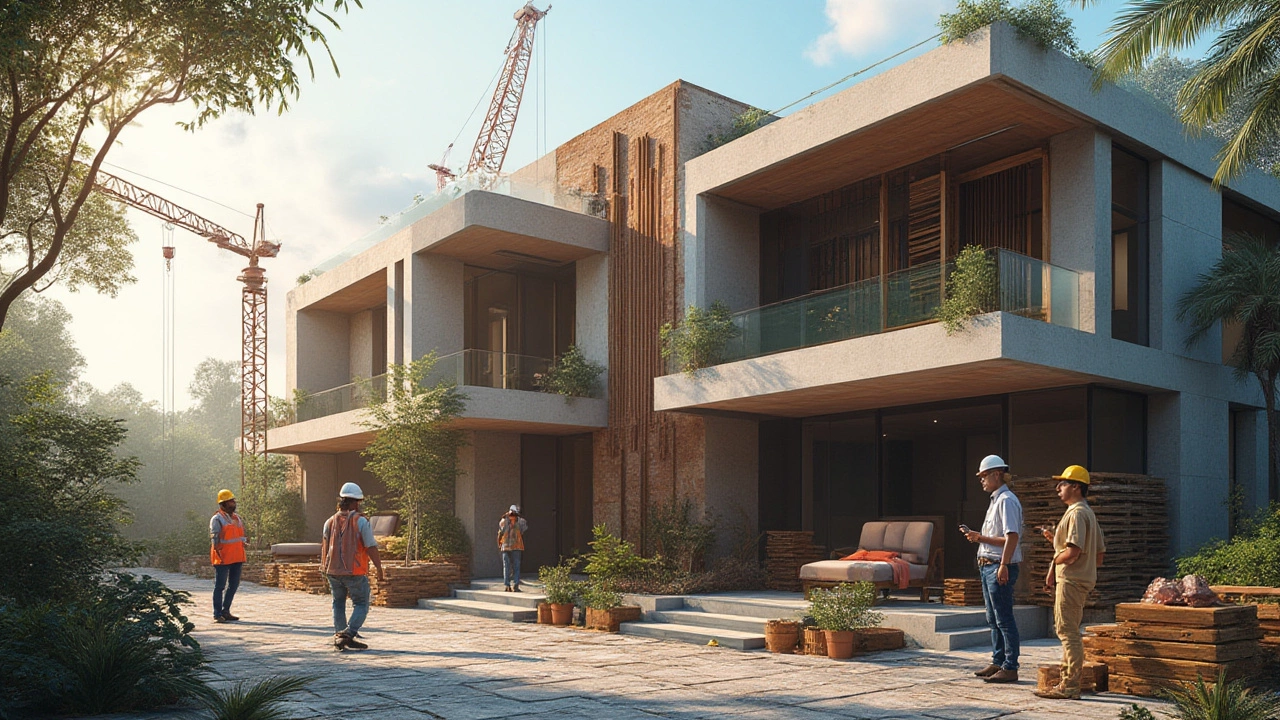Villa Construction Cost: What You Need to Know Before Building
Thinking about building a villa? The first question on everyone’s mind is the price tag. In India, villa construction cost varies a lot, but you can break it down into clear chunks. Knowing these numbers helps you avoid surprises and plan a realistic budget.
Key Factors That Drive the Price
Location is the biggest driver. A villa in Mumbai or Delhi will cost more per square foot than one in Tier‑2 cities like Pune or Jaipur because land, labor, and material rates differ. Next up is the size – a 2,500 sq ft villa will naturally cost more than a 1,500 sq ft one, but the cost per sq ft can drop a bit as the project scales.
Design complexity matters too. Simple rectangular plans with standard roof pitches are cheaper than custom shapes, multi‑level layouts, or intricate facades. High‑end finishes – marble flooring, designer kitchens, or smart home systems – add a premium, often 20‑30% on top of the base cost.
Material choices are another variable. Using cement‑sand‑brick (CSB) walls, locally sourced tiles, and basic fixtures keeps costs low. Opting for steel frames, premium tiles, or imported fittings pushes the price upward. Don’t forget permits and approvals; municipal fees can add 2‑5% of the total project cost.
Typical Cost Range in India
On average, villa construction in India runs between ₹1,800 and ₹3,500 per sq ft. In metros, expect ₹2,500‑₹4,500, while Tier‑2 and Tier‑3 cities often land around ₹1,500‑₹2,500. These figures include basic civil work, plaster, paint, flooring, and standard fittings. Luxury villas with high‑end interiors can easily cross ₹5,000 per sq ft.
For a 2,000 sq ft villa, the ballpark budget could be:
- Budget build: ₹3.6 million (₹1,800 × 2,000)
- Mid‑range: ₹5 million (₹2,500 × 2,000)
- Luxury: ₹8‑10 million (₹4,000‑₹5,000 × 2,000)
These numbers give you a starting point, but always add a contingency of 10‑15% for unexpected costs.
How to Keep Your Villa Budget in Check
Start with a solid plan. Work with an architect who understands your budget limits and can suggest cost‑effective design tweaks. Standardizing window sizes, using uniform wall heights, and limiting the number of roof slopes can shave off a lot.
Source materials locally. Bricks, cement, and tiles from nearby manufacturers reduce transportation costs. If you need premium items, buy them in bulk or during off‑season sales.
Get multiple quotes from contractors. A transparent, itemized estimate helps you compare labor rates and spot hidden charges. Don’t be afraid to negotiate – many builders offer discounts for early payment or cash settlements.
Consider phased construction. Build the core structure first, then add fancy finishes later when you have more cash flow. This approach spreads costs over time and lets you upgrade as your budget allows.
Finally, track every expense. Use a simple spreadsheet to log material purchases, labor payments, and permit fees. Seeing the numbers in real time keeps overspending from creeping in unnoticed.
Building a villa is a big investment, but with the right knowledge you can stay in control of the cost. Use these guidelines to set a realistic budget, choose smart materials, and manage the project step by step. Your dream home will feel even better when it doesn’t break the bank.
Modern Villa Construction Costs: Real Breakdown & Key Factors in 2025
by Arjun Mehta Jul 26 2025 0 VillasCurious about the real cost to build a modern villa in 2025? Here’s an in-depth look with up-to-date facts, detailed cost breakdowns, and smart building tips.
READ MORE